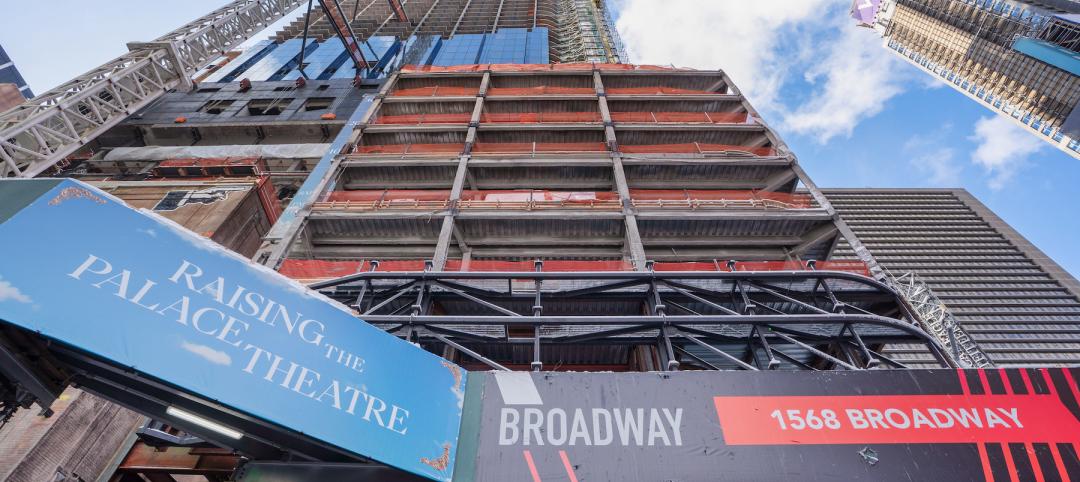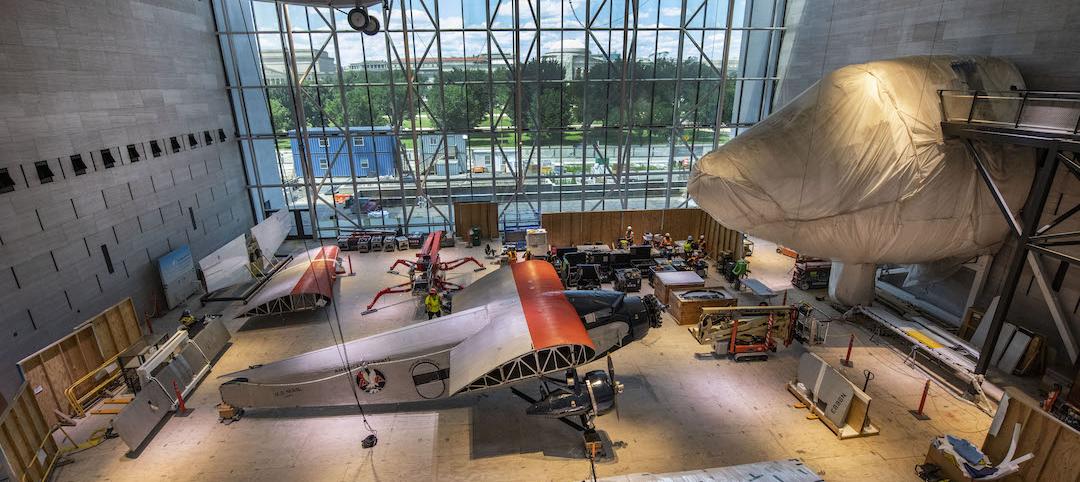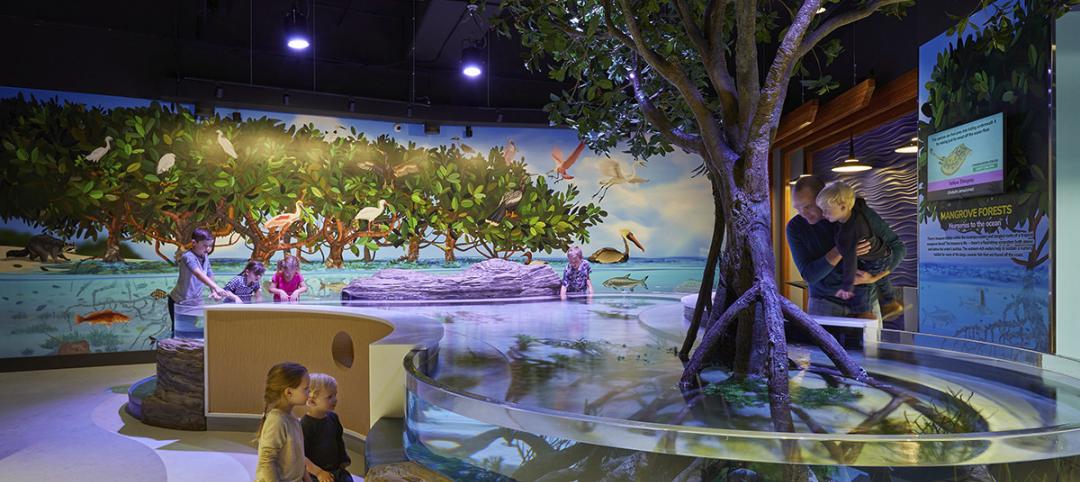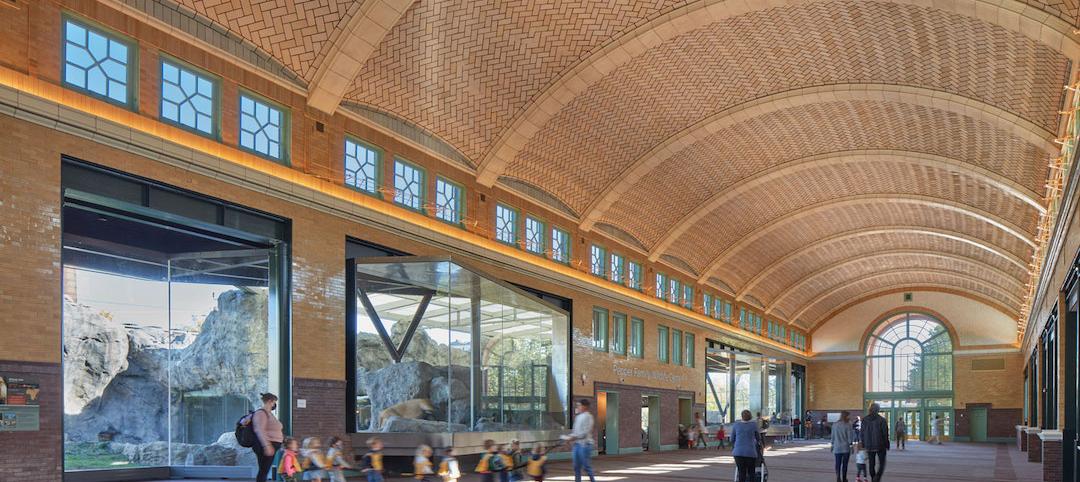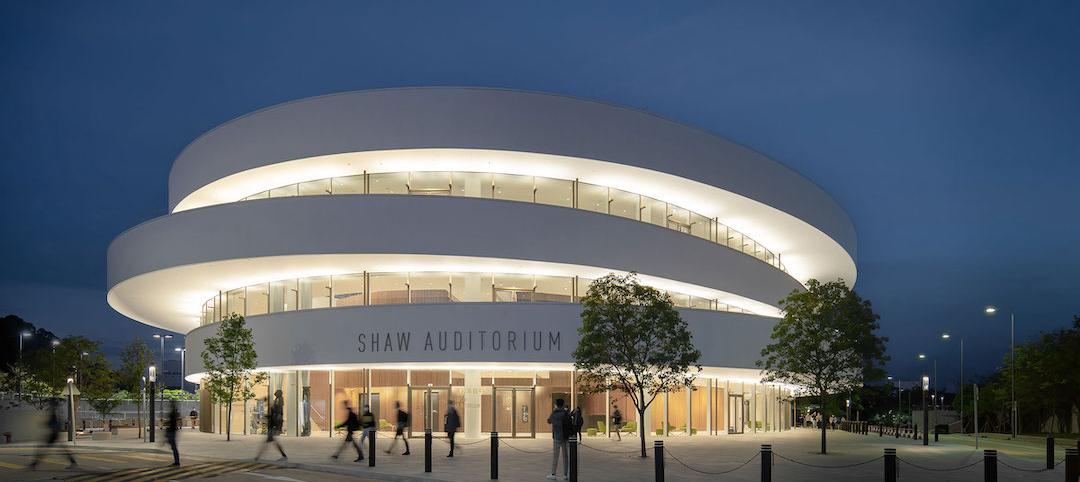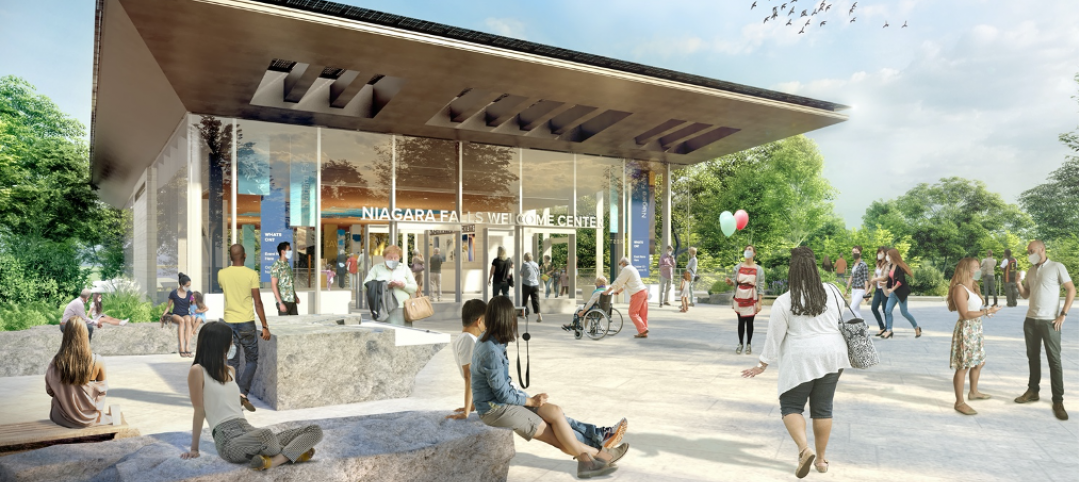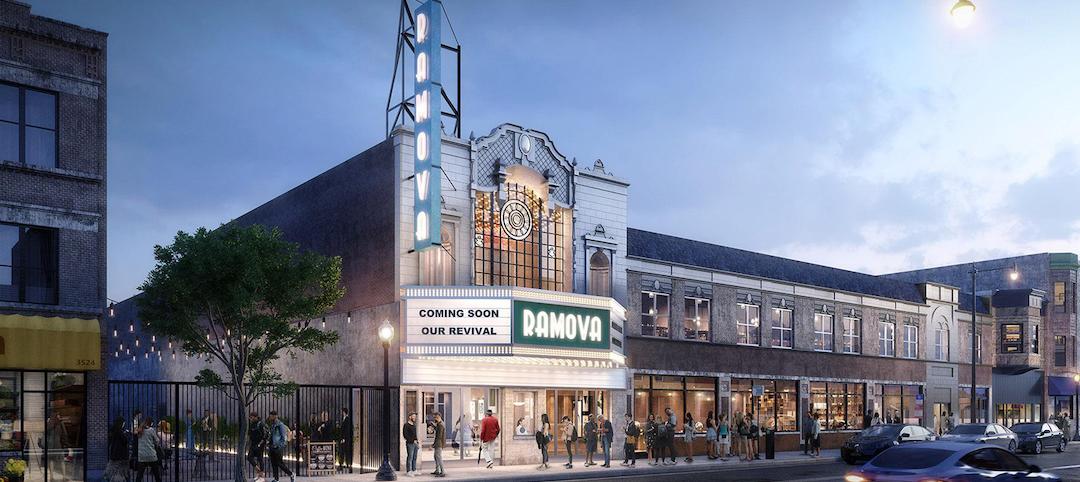 |
|
Design for the Holocaust and Human Rights Center of Maine is representative of a flower in bloom, complete with petals that shelter the circular exhibit space. The center connects to the Bennett Katz Library. Photos: Shepley Bullfinch |
The Holocaust and Human Rights Center of Maine was founded in 1985, but the organization didn't have a permanent home until May 2008. That's when the Michael Klahr Center, which houses the HHRC, opened on the Augusta campus of the University of Maine.
The design, by Boston-based architects Shepley Bulfinch Richardson & Abbott, was selected from among more than 200 entries in a university-sponsored competition. The winning project, a conceptualized flower in bloom, was created by a group of young architects at Shepley Bulfinch who imagined four petal-like forms growing out of the ground—symbolic of the seeds of democracy and freedom.
“There are still so many human rights issues out there today, so the flower blossoms are representative of new life coming back when conditions are right,” says Angela Watson, a principal at Shepley Bulfinch and mentor to the young architects.
 |
|
The Building Team utilized BIM to check the demands and capabilities of the petal forms and determine the proper petal radii, which cut the cost of bending the shell steel by half. The finished petals are clad in copper. |
It was Watson who introduced the HHRC project to the firm. When she learned of the University of Maine's design competition back in 2004, she organized a separate in-house competition as a way to give the firm's young bloods a chance to “flex their design muscles,” as she put it. The entire firm voted, and the two winning designs were entered in the HHRC competition, with one taking the prize.
At 6,300 sf, the Michael Klahr Center isn't a large building. The space is apportioned throughout a single level that includes a circular exhibit space in the center as well as offices and education space. However, its sculptural forms were complex enough for the Building Team, which included structural engineer Simpson Gumpertz and Heger of Waltham, Mass., to experiment with BIM.
Not a big deal now, but BIM was fairly new in 2004 when design began, turning this project into a BIM pilot for Shepley Bulfinch. The Building Team used BIM to explore many different construction options, including cast-in-place concrete, glulam wood beams, and steel. They found that cast-in-place would push the project over the $1.8 million budget cap and glulam would make the petals too thick. Their BIM model helped them decide that steel framework was the most efficient and economical solution.
Steel construction enabled some portions of the building to be shop fabricated, which saved time. General contractor Wright-Ryan Construction, Portland, Maine, cut construction time even more by framing large portions of the small building using wide-flange noncomposite steel beams and columns, with the lateral load system consisting of structural steel concentrically braced frames with hollow structural section (HSS) brace members.
But it was the complex design of the steel petals that really tested the Building Team's mettle.
The SGH structural engineering team developed an innovative structural system that consisted of a grid of HSS sections using curved HSS 8x8s as the ribs along the meridians of the spherical sections of the petals and straight HSS 4x4s along the parallels of latitude of the pedals. The HSS grids, braced and moment-connected in-plane, allowed the petals to act as shells. Three-inch-diameter structural steel columns pierced the petals and provided additional structural support. The BIM model enabled the team to check the demands and capabilities of the petals and determine the proper petal radii, which cut the cost of bending the shell steel by half.
Wood-framed box beams (made of 2x4s and plywood) were incorporated into the spans between the rib framing; this allowed the four petals to be sheathed in plywood, over which the standing seam copper roof panels were installed.
“This building is the perfect story,” says Watson. “It's a unique design from a young, talented team that overcame challenges of budget, schedule, and material and created a place that will have lasting impact.”
Related Stories
University Buildings | Feb 18, 2022
On-campus performing arts centers and museums can be talent magnets for universities
Cultural facilities are changing the way prospective students and parents view higher education campuses.
Resiliency | Feb 15, 2022
Design strategies for resilient buildings
LEO A DALY's National Director of Engineering Kim Cowman takes a building-level look at resilient design.
Cultural Facilities | Jan 27, 2022
Growth in content providers creates new demand for soundstage facilities
Relativity Architects' Partner Tima Bell discusses how the explosion in content providers has outpaced the availability of TV and film production soundstages in North America and Europe.
Cultural Facilities | Jan 18, 2022
A building in Times Square aspires to be a marketing and arts tool
The 580-ft TSX Broadway will have several LED signs on its exterior, and host an existing 27,000-sf theater that was hoisted 30 ft above street level.
Cultural Facilities | Dec 16, 2021
Museums and other cultural spaces reconsider how to serve their communities
Efforts to raise capital for cultural buildings became necessary during the COVID-19 health crisis.
Giants 400 | Nov 19, 2021
2021 Cultural Facilities Giants: Top architecture, engineering, and construction firms in the U.S. cultural facilities sector
Gensler, AECOM, Buro Happold, and Arup top BD+C's rankings of the nation's largest cultural facilities sector architecture, engineering, and construction firms, as reported in the 2021 Giants 400 Report.
Cultural Facilities | Nov 19, 2021
Goettsch Partners completes Lincoln Park Zoo’s Pepper Family Wildlife Center
The project doubles the size of the previous lion habitat.
Cultural Facilities | Nov 17, 2021
Henning Larsen-designed Shaw Auditorium opens at the Hong Kong University of Science and Technology
The project celebrated its grand opening as part of HKUST’s thirtieth anniversary celebration.
Cultural Facilities | Oct 19, 2021
Niagara Falls is getting a bigger Welcome Center
The GWWO Architects-designed building will mostly sit on the site of the center it replaces.
Reconstruction & Renovation | Oct 13, 2021
Restoration of Ramova Theater in Chicago’s Bridgeport Neighborhood begins
The building was originally built in 1929.





